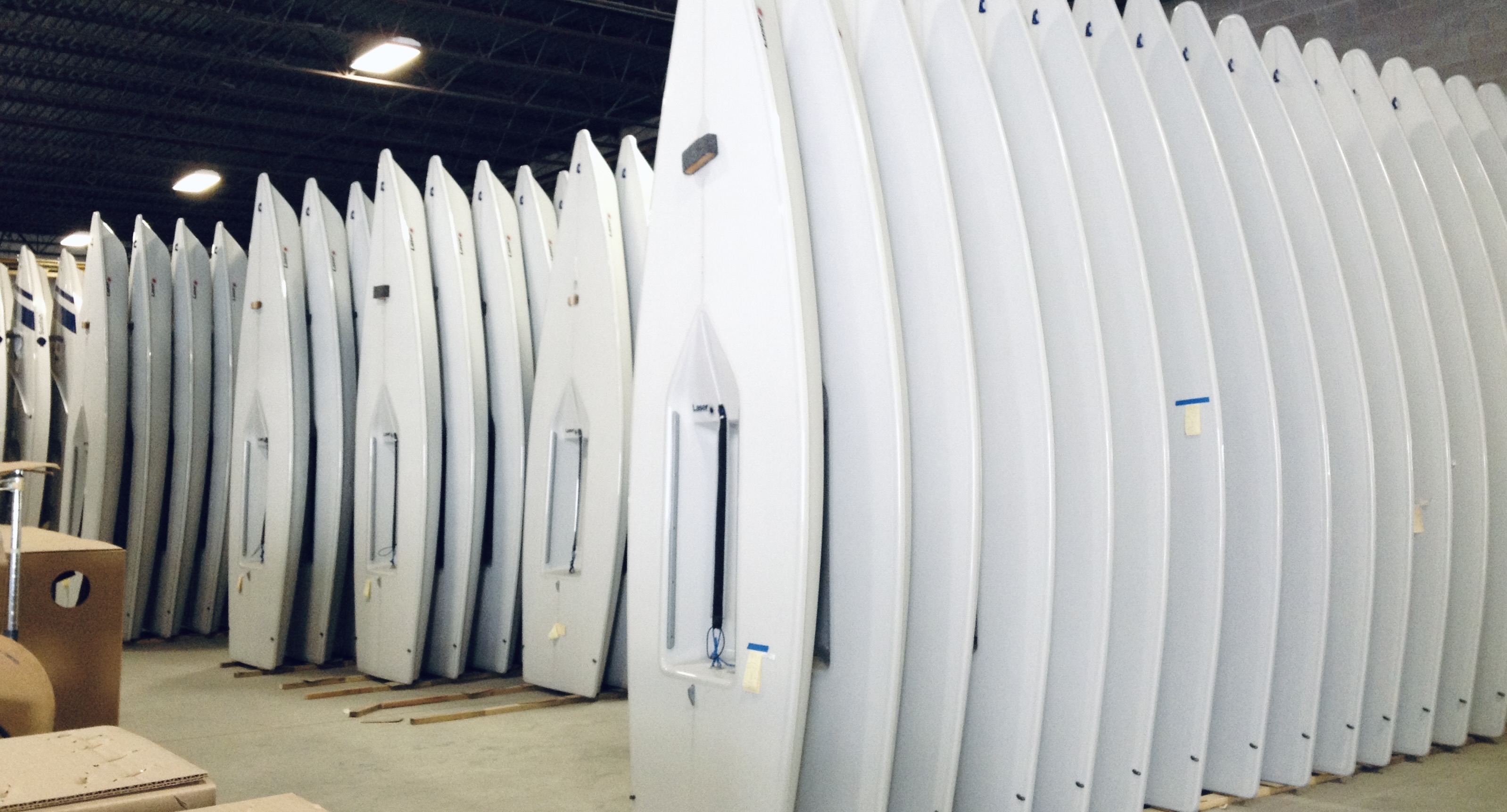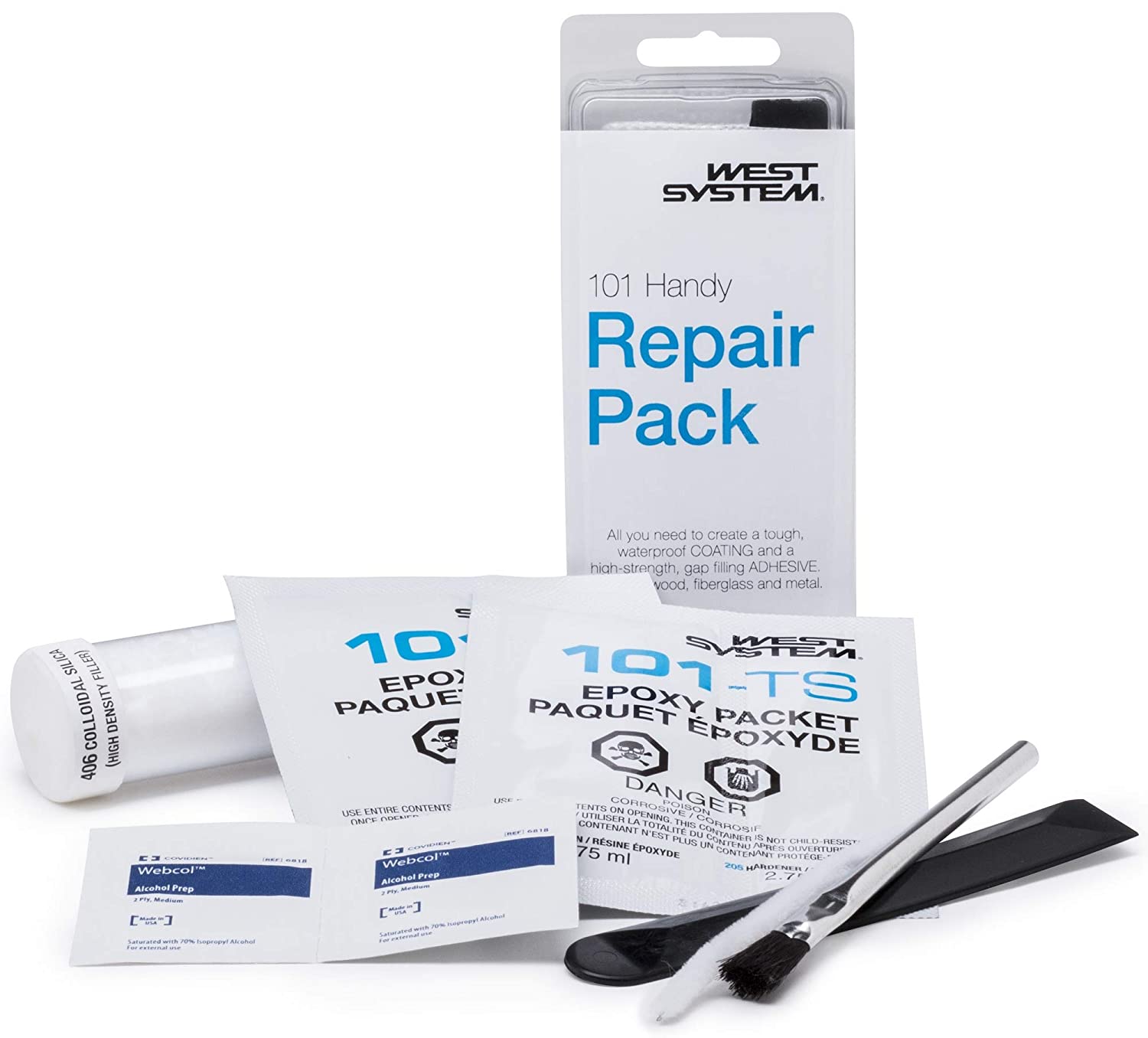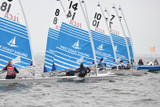LASER/ILCA TIPS: How to Repair the 'Hull to Deck Joint’ on a Laser / ILCA
Any crack or damage in the hull of your boat is something that should not be ignored. And while not all damage is equal, the ‘hull to deck joint’ is one that should be addressed. If you find yourself in this situation, hopefully these repair tips will help.
What is the ‘Hull to Deck Joint’?
Simply stated, the hull to deck joint is exactly what it sounds like - where the hull of the boat (the bottom) is joined together with the deck (the top). Fiberglass boats are constructed as separate pieces and then those components are combined to make your boat.
To inspect your hull to deck joint on your ILCA/Laser, flip the boat upside down. On the edge of the boat you will see what looks like an Oreo cookie (the joint will be darker on both sides sandwiched around a white or yellow filling). Starting in the early 2010’s, manufacturers started ‘painting’ over this joint with gelcoat, so you couldn’t see this layered joint, which was a purely aesthetic decision.

The Problem:
Over time (especially in older and heavily used boats), things such as hitting the dock, hitting other boats, freezing temperatures, etc. can lead to this joint failing. Evidence of this will be seen in the form of cracks or lines in the middle (filling) material.
The issue here isn’t so much a hull integrity problem as this joint is one of the strongest on the boat, but it is more so an entry point for water to seep in. Water in the hull is not good.
The Fix:
A super temporary repair (only if you notice this right before launching to sail): Throw some clear packing tape over the damaged area. Then follow these steps for a permanent and proper solution for this problem:
Steps for Prepping the Boat:
- Flip the boat upside down
- Dremel out the damaged area (of the ‘Oreo cookie’). Go a bit further than the crack itself, and wider too. Make sure to get it all out
- Clean it with acetone, vacuum, or air compressor, and let dry
Steps for Repairing the Hull to Deck Joint:
- Put on some latex/nitrile gloves. If you’re working in an enclosed space, it’s best to wear an organic respirator. The chemicals you’ll be working with are all ‘off the shelf’ items but it’s better to err on the side of safety here.
- Mix up some West Systems Epoxy in a small container. The ratios are dependent on temperature, so be sure to check the label. Aim for a maple syrup consistency.
- With a brush, or tongue depressor ‘wet out’ the damaged area. Think like you are trying to cover the crevices of a delicious waffle, using as little maple syrup as possible. You want to let the boat ‘soak up’ some of the liquid epoxy. We are NOT filling the hole here, but rather coating the repair area.
- Next, thicken your epoxy with silica filler. Aim for a consistency of thick peanut butter.
- Use your finger or tongue depressor to push the epoxy in and fill the void, using a more than you think. More is better than not enough here. Smooth it out as best you can.
- Let the epoxy cure overnight.
- Lightly sand with 120 grit then 320 grit sandpaper. The goal is to make sure it’s not sharp, and looks decent.
Congratulations! You’ve just fixed the hull to deck joint on your boat. Celebrate and go for a sail!
This is not a particularly difficult repair but it is an important one. If you’ve never worked with epoxy before, don’t be intimidated, just go for it.
Taking care of your Laser / ILCA sometimes means getting your hands dirty. But it also means your boat will take care of you over time. We hope you never have to do this type of repair - but if you do, do it with confidence and get back out on the water!
---
Recommended Products:
West System - Epoxy Repair Pack (Click Here)
Other Tools: Dremel, respirator (if working inside), latex gloves, brush or tongue depressor, 120 & 320 grit sandpaper & acetone.
Additional Resources:
Click here for our Laser/ILCA Rigging Guide
Click here for our Laser/ILCA Rigging Videos
Click here for our Laser/ILCA Reference Photos
---
This article was written by George Yioulos at West Coast Sailing.
All rights are reserved - if you want to make a link, great!
If you want to copy the content in any of our articles, please make a request to Marketing@WestCoastSailing.net
Recent Posts
-
ILCA Charter Boat Blow Out Sale
Jan 2nd 2024All charter boats have sold out. Please contact our team at boatsales@westcoastsailing.net for infor
-
2023 Year In Review
Dec 22nd 2023Another year has flown by, and we are beyond grateful to have the best customers in the world that m
-
Starting Line Sailing Supports the 2023 ICSA Singlehanded Nationals at Tulane University
Nov 15th 2023November 13th, 2023Starting Line Sailing, through it's companies Zim Sailing, West Coast Sailing, an
- Read more articles




